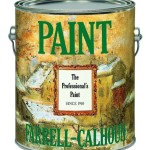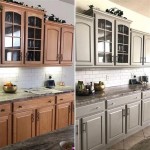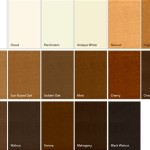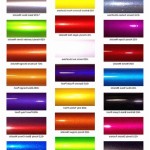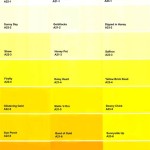What Color Should I Paint My Game Room Walls?
The selection of a paint color for a game room transcends mere aesthetics; it significantly impacts the overall ambiance, influencing mood, focus, and the perceived quality of the gaming experience. A well-chosen color palette can enhance immersion, reduce eye strain, and create an environment conducive to both intense competition and relaxed recreation. Therefore, careful consideration should be given to various factors before committing to a specific hue.
The ideal color for game room walls is subjective and dependent on individual preferences and priorities. However, several principles can guide the decision-making process, ensuring a space that is both visually appealing and functionally effective. These principles encompass the psychological effects of color, the existing décor and lighting conditions, and the intended use of the game room.
Consider the Psychological Impact of Color
Colors possess the inherent ability to evoke specific emotions and influence behavior. Understanding these psychological effects is crucial in selecting a paint color that aligns with the desired atmosphere of the game room. For instance, blue is often associated with calmness, focus, and concentration, making it a suitable choice for rooms dedicated to strategy games or competitive esports. Conversely, red is a stimulating and energetic color that can enhance excitement and competition, but its overuse can lead to feelings of agitation or anxiety. Therefore, red is best employed as an accent color rather than the dominant wall color.
Green is associated with nature, tranquility, and balance, and can provide a refreshing and calming effect, particularly beneficial during long gaming sessions. It's a versatile color that works well in various gaming environments, from casual recreational spaces to more focused competitive setups. Yellow, a color associated with optimism and happiness, can brighten a room and create a welcoming atmosphere. However, similar to red, excessive yellow can be overwhelming and distracting. Using muted or pastel shades of yellow can mitigate this effect.
Gray is a neutral color that provides a sophisticated and modern backdrop for a game room. Its versatility allows it to be paired with various accent colors, creating a customized and visually appealing space. Lighter shades of gray can open up a small room, while darker shades can create a more intimate and dramatic setting. Black, while often associated with sophistication and power, should be used sparingly in game rooms, as it can absorb light and create a gloomy atmosphere. As an accent color, black can add depth and contrast to a room, highlighting specific features or creating a dramatic focal point.
Beyond single colors, consider color combinations and their combined psychological effects. A balanced combination of calming and stimulating colors can create a dynamic and engaging environment that supports both focus and relaxation. For example, pairing a neutral gray with blue and green accents can create a serene yet stimulating gaming space.
Evaluate Existing Décor and Lighting
The color of the game room walls should complement the existing décor, including furniture, flooring, and accessories. A cohesive color scheme creates a visually harmonious and aesthetically pleasing environment. Consider the dominant colors of the furniture and flooring and select a wall color that either complements or contrasts them effectively. For instance, if the game room features dark wood furniture, lighter wall colors can provide a contrasting backdrop, preventing the room from feeling too dark and oppressive.
Lighting plays a crucial role in how color is perceived. Natural light enhances the vibrancy of colors, while artificial light can alter their appearance. Evaluate the amount of natural light that enters the game room and consider the type of artificial lighting used. Warm lighting, such as incandescent or halogen bulbs, tends to enhance warm colors like red, orange, and yellow, while cool lighting, such as LED or fluorescent bulbs, tends to enhance cool colors like blue, green, and purple. Before committing to a specific paint color, test it under both natural and artificial lighting conditions to ensure it achieves the desired effect.
Consider the finish of the paint. Matte finishes absorb light, creating a softer and more muted appearance, while gloss finishes reflect light, creating a brighter and more vibrant appearance. Matte finishes are generally preferred for game rooms, as they reduce glare and eye strain, while gloss finishes are more durable and easier to clean, making them suitable for high-traffic areas. Eggshell and satin finishes offer a balance between the two, providing a subtle sheen and good durability.
Furthermore, consider the size of the room. Lighter colors tend to make a room feel larger and more open, while darker colors can make it feel smaller and more intimate. If the game room is small, opt for lighter wall colors to maximize the sense of space. Conversely, if the game room is large, darker colors can create a more cozy and inviting atmosphere.
Reflect on the Intended Use of the Game Room
The intended use of the game room should significantly influence the color selection. A game room primarily used for competitive gaming may benefit from colors that promote focus and alertness, such as blue or green. A game room primarily used for casual recreation may benefit from colors that promote relaxation and socializing, such as warm neutrals or calming pastels. A multipurpose game room may require a more versatile color palette that can accommodate both intense gaming sessions and relaxed social gatherings.
Consider the types of games that will be played in the room. For example, if the game room is primarily used for playing video games, darker wall colors can create a more immersive and cinematic experience. If the game room is primarily used for playing board games or card games, lighter wall colors can provide a brighter and more inviting atmosphere. If the game room includes a dedicated space for streaming or content creation, consider using a neutral wall color as a backdrop to minimize distractions and ensure accurate color representation in video footage.
Think about the age group and interests of the primary users of the game room. A game room designed for children may benefit from brighter and more playful colors, while a game room designed for adults may benefit from more sophisticated and subdued colors. Consider incorporating themed colors or patterns that reflect the user's interests, such as gaming characters, sports teams, or science fiction themes. However, avoid overwhelming the space with too many colors or patterns, as this can create a cluttered and distracting environment.
Ultimately, the choice of wall color should reflect the personality and preferences of the individuals who will be using the game room. Creating a personalized space that reflects individual tastes and interests can enhance the overall gaming experience and create a more enjoyable and inviting environment. Consider incorporating personal touches, such as artwork, posters, or memorabilia, that complement the wall color and add character to the room.
Before making a final decision, it is advisable to obtain paint samples and test them on the walls of the game room. Observe the colors under different lighting conditions and at different times of day to ensure they achieve the desired effect. This will help to avoid costly mistakes and ensure that the chosen paint color creates the perfect atmosphere for the game room.
In summary, choosing the right color for a game room involves considering the psychological impact of color, evaluating existing décor and lighting, and reflecting on the intended use of the space. By carefully considering these factors, individuals can create a game room that is both aesthetically pleasing and functionally effective, enhancing the overall gaming experience for years to come.

Pick The Perfect Paint Color For Your Game Room Colorfully Behr

16 Gaming Room Paint Ideas To Elevate Your Gameplay Experience Nippon Singapore

Best Color For Gaming Room Expert Recommendations

Best Color For Gaming Room Expert Recommendations

23 Game Room Color Ideas For Paint Decor Carla Bast Design

23 Game Room Color Ideas For Paint Decor Carla Bast Design

23 Game Room Color Ideas For Paint Decor Carla Bast Design

23 Game Room Color Ideas For Paint Decor Carla Bast Design

Best Color For Gaming Room Expert Recommendations

23 Game Room Color Ideas For Paint Decor Carla Bast Design
Related Posts

